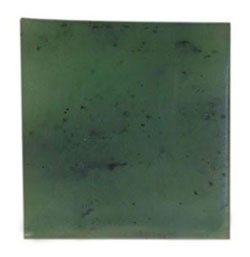 | NEPHRITE JADE | Hardness | - | | Color | - | | Origin | - | | Transparency | - | | |
|
| The name, nephrite, is from the Greek nephros (kidney) via Latin Lapis nephriticus (kidney stone), and appears to have been based on the ancient belief that it served as a remedy so far as aleviating or curing kidney diseases. Although nephrite has been "discredited" so far as referring to any known mineral species by the CNMMN [Commission on New Minerals and Mineral Names] of the IMA [International Mineralogical Association], it seems likely that it will persist in the world of gemology.
Nephrite jade does not take up dyes as readily as jadeite jade; nonetheless, it has on occasion been dyed as well as otherwise treated; examples are light colored varieties that have been dyed green, carvings that have been "artistically stained to enhance the detail" (see Koivula and Kammerling 1990, p.309), and many pieces that have been waxed or oiled.
Some nephrite jade tends to become dull with the passage of time.
Over the ages, nephrite, apparently because of its great toughness, found wide use as tools, including sacrificial knives and weapons, in China, central Europe, New Zealand and in the Americas, especially in what are now known as Guatemala, Mexico and the southwestern United States.
The sarcophagus for Czar Alexander III was carved from nephrite jade.
Apparently jade items first fashioned from nephrite jade from the well known occurrences in central Wyoming was cut and polished in 1908 and 1909 in Salinas, California. The rough material is said to have been procured from Wyoming cowboys who were spending their winter in California
|
|
|
|